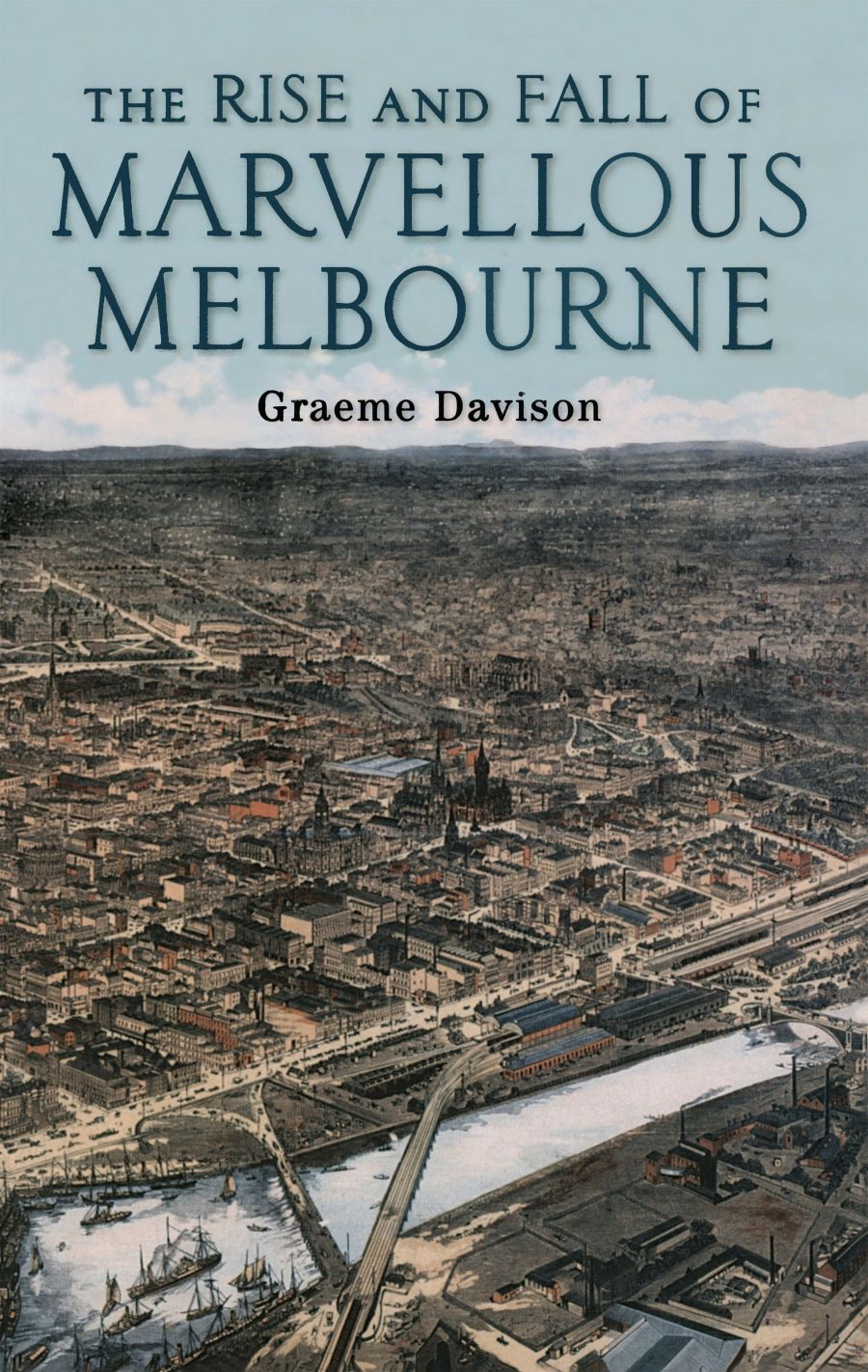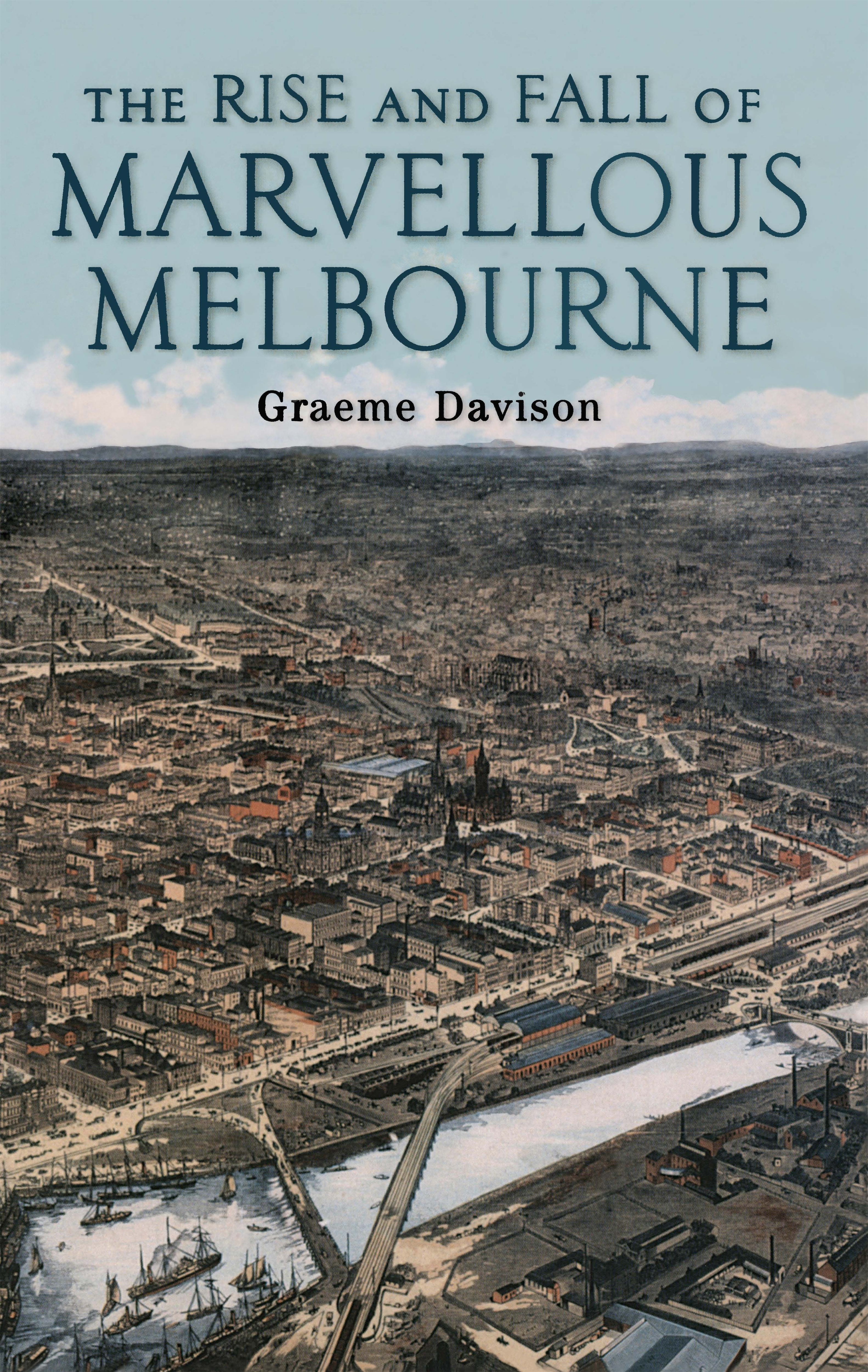
- Free Article: No
- Contents Category: Australian History
- Review Article: Yes
- Article Title: Start and stop, bum and bust in Victoria’s Metropolis
- Online Only: No
- Custom Highlight Text:
Fifteen years ago the British urban historian Asa Briggs wrote a short but stimulating essay on Melbourne in the Victorian era in his Victorian Cities. In thirty pages he not only challenged the conventional assumptions of Australian historiography of that time (specifically deploring the lack of systematic study of the Australian city) but also threw out various ideas about how to approach Australian urban history. It took some time for historians here to take up Briggs’ challenge, but with the publication of Graeme Davison’s The Rise and Fall of Marvellous Melbourne Australian urban history has come of age.
- Book 1 Title: The Rise and Fall of Marvellous Melbourne
- Book 1 Biblio: Melbourne University Press, $18.80 pb, 315 pp
- Book 1 Cover Small (400 x 600):

- Book 1 Cover (800 x 1200):

The two part structure (Part I, The City; Part II, The Suburbs), is a happy resolution of both the literary/aesthetic and the scientific (in the Marxist sense) demands of the subject matter from a literary point of view it provides a logical dichotomy between the dominant images and realities of urban life, the sordid commercialism -of the market city and the bucolic innocence of suburban life. From a scientific point of view the ordering around the locational expression of the relations of production on the one hand (the city as productive centre) and the relations of consumption and distribution on the other (with the suburbs as the ultimate in consumerism as a way of life) has an innate logic.
Part I, The City, describes in turn the development of her commerce, manufacturing, building industry, professions and civil service, and should be read as a series of variations on a common theme: the evolution of a provincial city towards the competitive, bureaucratic structures of an authentic metropolis. Here we learn of the eclipse of the old merchant class by the new elite of financiers, professional men and manufacturers, and of the contrast between the new bureaucratic and the older personal style of management; of the growing sense of ‘disparity’ between capital and labour reflected in the emerging strength of unions and in the increasing social segregation between different regions of the city; of the growth of a low paid female and juvenile work force in the inner suburbs, reinforcing the problems of pauperism, larrikinism and crime correlated with the· economic turmoil of the labour-intensive and undercapitalised manufacturing industries located there.
We learn that the professions remained securely in the keeping of Melbourne’s upper middle classes, who ‘saw themselves as scholars and gentlemen (a few even were such) and … surrounded themselves with the paraphernalia of gentility but … practised a thoroughgoing commercialism’. And that if you lived in Collingwood there was one doctor between 7,000 residents, while in St Kilda with its population of wealthy geriatrics there was a· resident doctor for every 661 persons. ‘Doctors’, Davison comments ‘like charities and churches, abounded among the healthy, wealthy and wise’. And we learn of the dramatic growth of the public service (115 per cent) in the 1880s and the reformists’ dilemma plaguing it – the impossibility of designing a system of promotions that rewarded conspicuous talent without opening the way to jobbery and favouritism.
The changes described in Part I add up to a ‘new stage in the subordination of urban life to market structures’. But what did market structures have to do with suburbanism – the ideal, and the reality. In Part II Davison explores the origins and consequences of the boom campaign to popularise suburban ism as a way of life, the theory and practice of home ownership, and the process of earning and spending in the eighties and doing without in the nineties.
Of greatest importance in this section is the analysis or the social ideal and economic reality of home ownership. Unlike some of the vulgar Marxists of today who see home ownership as a conspiracy against the masses, undermining the solidarity of the working class etc., Davison argues firmly about the reality of the ideal of ownership, and the inadequacy of emphasis on market forces as the sole explanation of the level and pattern of ownership established by the late 1880s. The most important table (of many) in the book is one showing home ownership rates by householder’s occupation, indicating a surprisingly wide diffusion of property rights between the different classes. (fifty-eight per cent of professionals and managers were owners, but so too were forty-six per cent of artisans and fifty per cent of service and unskilled workers). Does this help to explain the comparative moderation of working-class politics in Melbourne? Or do both point back to the foundational significance of Smilesian ideals of self-help and upward mobility in the evolution of the gold colony? Here, Davison unfortunately reserves final judgement, but allows himself a speculation about the relevance of the aspirations of landless gold diggers. ‘Was the yeoman dream of live acres and a cow realised in a quarter acre block and a pen of chooks?
‘Making Ends Meet’ is a valuable chapter analysing the incomes and living costs of different classes and rendering sensitively the domestic tragedies of the 1890s – the suicides, infanticides, enforced separations of husband and wives, the·evictions and strained experiments of joint housekeeping, the morale-sapping dependence of unemployed breadwinners upon their wives and children, the quiet desperation of expropriated old people.
Alongside this wealth of detailed research on all these important issues, the question broached in the final chapter – how marvellous was ‘Marvellous Melbourne’? – pales into relative insignificance.
This massive, scholarly and elegant study (the twenty-eight pages of end notes indicate the ten years of research effort behind it) is of major importance to historians, political scientists, sociologists – to all students of Australian urban society. My only concern is that its great strengths (scholarship, literary merit, theoretical force, and empirical detail) may prove its fatal flaw, in commercial or audience terms, its very sophistication deterring the broad readership it deserves.
At any rate, it raises the ever-troublesome dilemma for researchers – at what point does the law of diminishing returns apply to the research process? Is there a law, yet to be formulated, about relationships between the depth and detail of research, and its prospect of general impact?


Comments powered by CComment